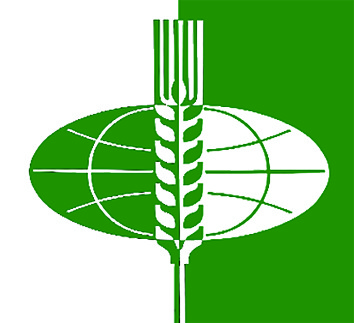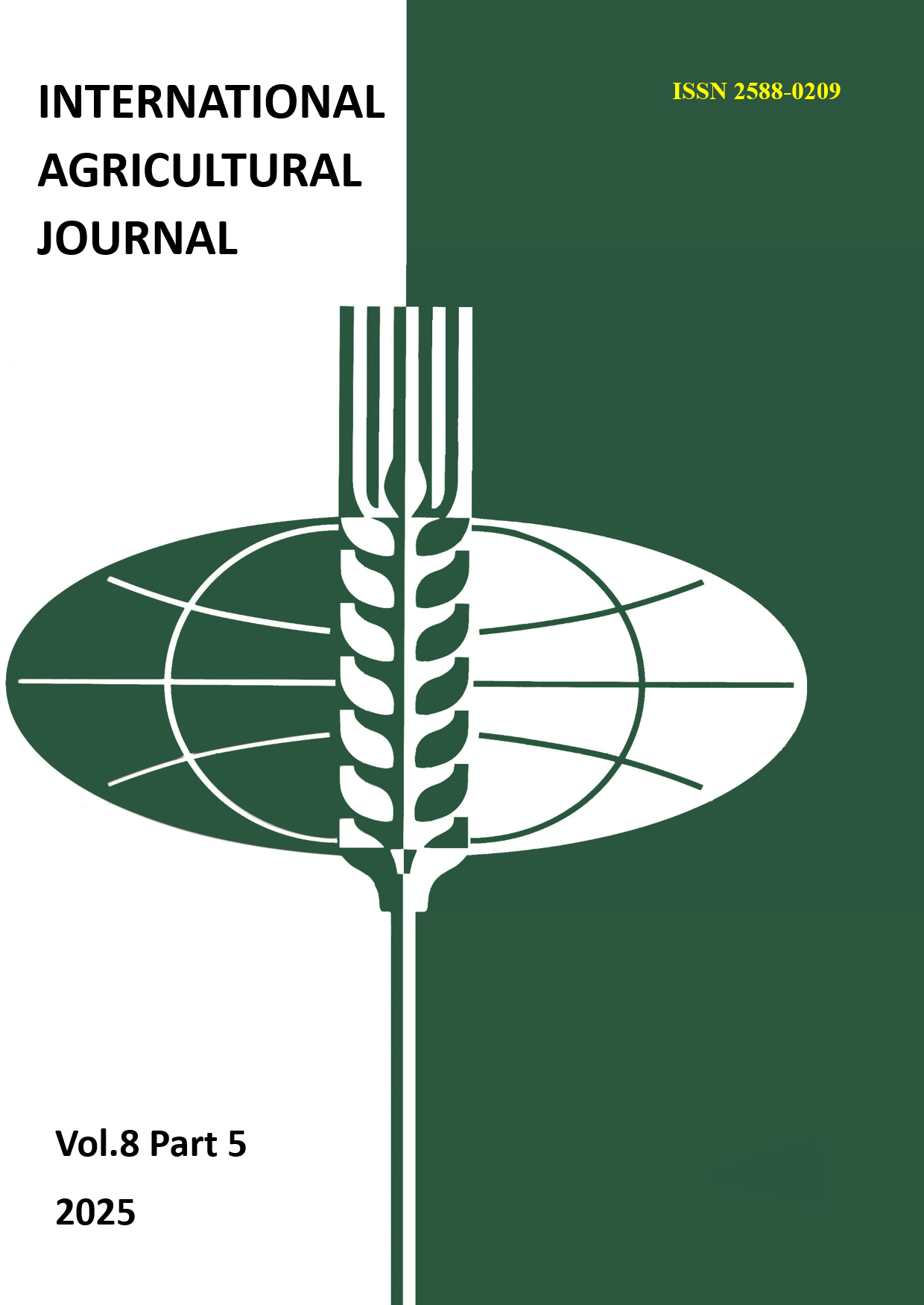UDC 634.64
One of the most important branches of fruit growing in Azerbaijan is the cultivation of subtropical crops. Among valuable subtropical crops, pomegranate is considered very promising. The areas occupied by these crops grow annually, and new nurseries are being established. However, the growing conditions and fungal diseases of this crop in the agroclimatic zone of Talysh are not well studied. One of the little-studied issues is the determination of the phytopathological state of this plant, as well as the lack of developed control measures for existing diseases. The decline in the quality of pomegranate fruits during the growing season and storage can be caused by various types of diseases, both infectious (fungal, bacterial) and functional or physiological. Foreign mycological and phytopathological literature notes numerous fungal organisms on pomegranate crops that cause significant damage to this crop. Our research, conducted in the household plots of the agroclimatic zone of Talysh, particularly in the Lankaran-Astara zone from 2006 to the present, focused on identifying the species composition and studying the biological characteristics of the most common and harmful pomegranate fungi. In this article, our aim was to summarize information about the species composition of pomegranate diseases based on the materials we collected through gathering and observations. According to phytopathological methodology, a visual inspection of leaves, branches, and fruits was conducted from all four sides of the plant. During field and laboratory experimental studies, the pomegranate mycobiota was identified. Using the methodology, the species composition of fungi detected on individual plant organs was determined. As a result of the conducted surveys, on pomegranate we In the agro-climatic zone of Talysh, 21 species of pathogenic fungi were identified: Sphaceloma punicae Bitank. et Jenk, Botrytis cinerea Pers, Macrophoma granati Berl. et Vogl, Phoma punicae Tassi, Zythia versoniana Sacc, Phyllastista punica Saecet Spreg, Discosia sp., Erysiphe communis Gerev, Penicillium sp., Aspergillus niger Van Tieghem, Cercospora lythracearum Heald. et Wolf, Phytophthora sp., Alternaria sp., Erysiphe communis Gerev, Alternaria alternata (Fr.) Keisl, Capnodium spp.
subtropical fruit crops, damage, pycnospores, zythium rot of fruits, anthracnose of pomegranate fruits
1. Guliyev, F. A. The main disease of pomegranate in chestnut (gray-brown) soils of Azerbaijan / F. A. Guliyev, L. A. Huseinova // Kherson State Agrarian University, «The impact of climate change on spatial development of Earth, s territories: implications and solutions», 2020. – R. 89–94.
2. Bartosz Z, Agnieszka S, Dawid R: Deep learning approach to describe and classify fungi microscopic images// PLoS ONE, 2020, vol. 15, no. 6, DOIhttps://doi.org/10.1371/journal.pone.0234806
3. MycoVank Database: Fungal Databases, Nomenclature & Species Banks https:/www.mycobank/org
4. Huang, L., Li, Q.-C., Zhang, Y., Li, D.-W., and Ye, J.-R. Colletotrichum gloeosporioides sensu stricto is a pathogen of leaf anthracnose on evergreen spindle tree (Euonymus japonicus) // Plant Diseases. 2016. Vol. 100. P. 672-678.
5. Xarvier K. V., Peres N. A. et al. Characterization of Alternaria and Colletotrichum species associated with pomegranate ( Punica granatum L) in Maharashtra State of India \\ Plant Disease/ 2022, T.106 №11, r.2771-2780, DOIhttps://doi.org/10.1094/DDIS-03-19-0598- RE
6. Cara, M., Toska, M., Frasheri, D. et al. Alternaria species causing pomegranate and citrus fruit rots in Albania. //Journal Plant Diseases and Protection, 2022, T.129, no.6. r.1095– 1104 https://doi.org/10.1007/s41348-022-00630-7
7. Guliev, F. A. Fitopatologicheskaya ekspertiza granatovyh sadov v zapadnoy chasti Azerbaydzhana / F. A. Guliev, L. A. Guseynova // Nauka i obrazovanie v sovremennom mire: vyzovy XXI veka: materialy. VII Mezhdunar. nauch.-prakt. konf. – Kazahstan, 2020. – S. 60–68.
8. Guliev, F. A. Vidovoy sostav vozbuditeley bolezney granata v Gyandzha-Kazahskoy geograficheskoy zone i usovershenstvovanie mer bor'by s osnovnymi ih nih / L. A. Guseynova, F. A. Guliev, L. A. Guseynova // Perm. agrar. vestn. – 2020. – № 3 (31). – S. 39–51.
9. Guliev, F. A. Vliyanie otdel'nyh agrotehnicheskih meropriyatiy na porazhennost' rasteniy granata fomozom ili rakom vetvey v usloviyah Gyandzha-Kazahskoy geograficheskoy zony / F. A. Guliev, L. A. Guseynova // Global'naya nauka i innovacii 2021: Central'naya Aziya. Ser. «S.-h. nauki». – 2021. – № 1 (12). – S. 15–20.
10. Guliev, F. A., Guseynova L. A. Makrofomoz granatovyh kustov v usloviyah zapadnoy chasti Azerbaydzhana.// Melioraciya. 2022, № 3 (101). -S. 57-63
11. Guliev, F. A. Zitioznaya plodovaya gnil' granatovyh kustov v zapadnoy chasti Azerbaydzhana / F. A. Guliev, M. M. Gurbanov, L. A. Guseynova // Vestn. Izhev. gos. s.-h. akad. – 2020. – № 4 (64). – S. 19–30.
12. Guliev, F. A. Osnovnye bolezni Punica granatum L. v usloviyah zapadnoy chasti Azerbaydzhana / F. A. Guliev, L. A. Guseynova // Agroekolog. zhurn. – 2020. – № 4. – S. 76–83.
13. Guliev, F. A. Parazitnye griby granatovyh kustov v zapadnoy chasti Azerbaydzhana / F. A. Guliev, L. A. Guseynova // Nauch. sb. In-ta vinogradarstva i vinodeliya. – Odessa, 2020. – Vyp. 57. – S. 35–46.
14. Gasanly I. Z. Dinamika razvitiya bolezney rasteniy granata v Apsheronskom rayone Azerbaydzhana // Byulleten' nauki i praktiki. 2023. T. 9. №11. S. 161-167. https://doi.org/10.33619/2414-2948/96/22
15. Gasanov I. Z. Bioekologicheskie osobennosti i intensivnost' rasprostraneniya gribnyh zabolevaniy granata // Byulleten' nauki i praktiki. 2023. T. 9. №2. S. 112-117. https://doi.org/10.33619/2414-2948/87/14
16. Guliev, F. A. Biologicheskie osobennosti vozbuditeley gribnyh bolezney granata (Punica granatum L.) / F. A. Guliev, L. A. Guseynova // Botanika (issledovaniya) : sb. nauch. tr. / In-t eksperim. botaniki im. V. F. Kuprevicha NAN Belarusi. – Minsk, 2020. – Vyp. 49. – S. 177–187.














